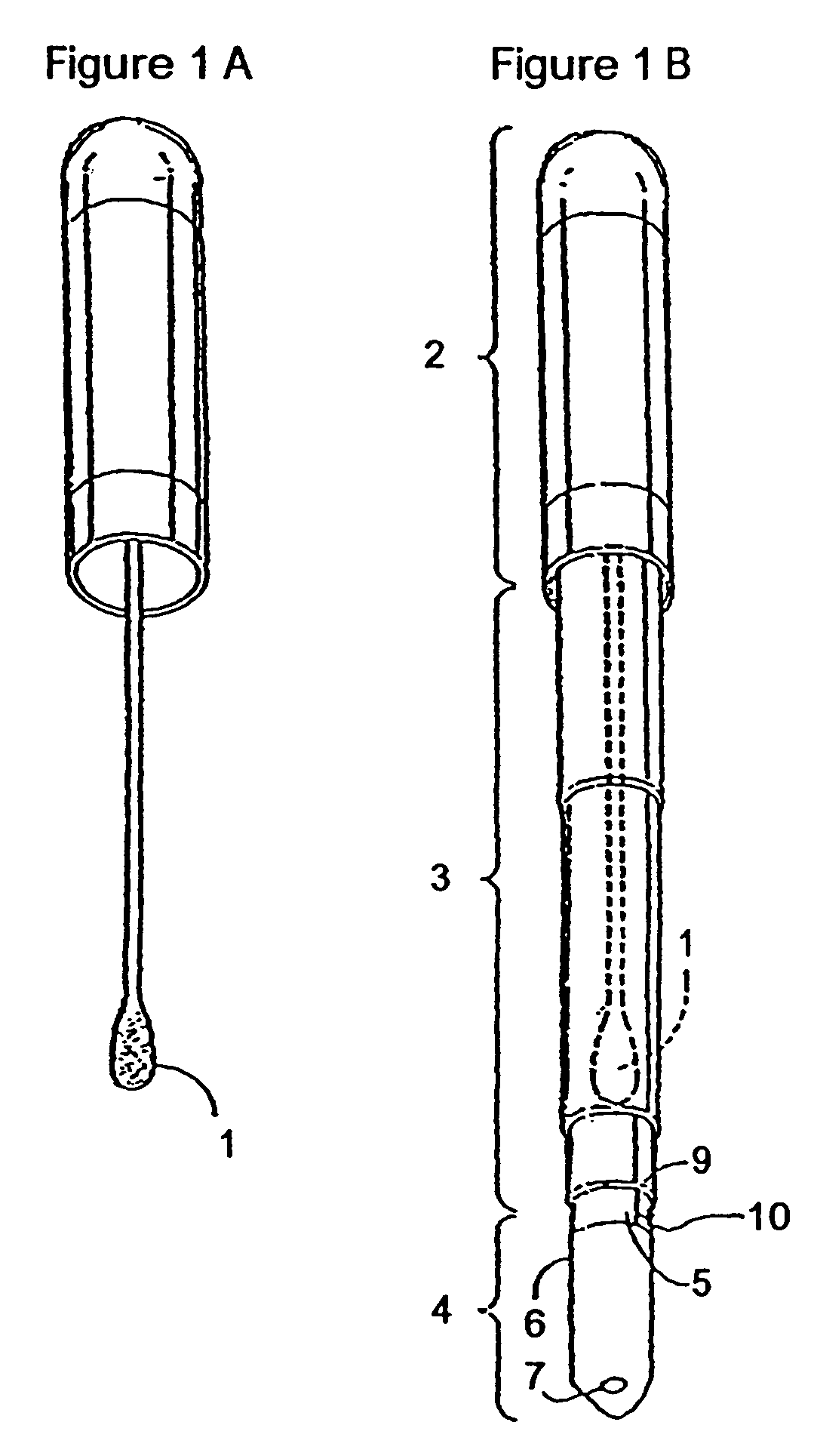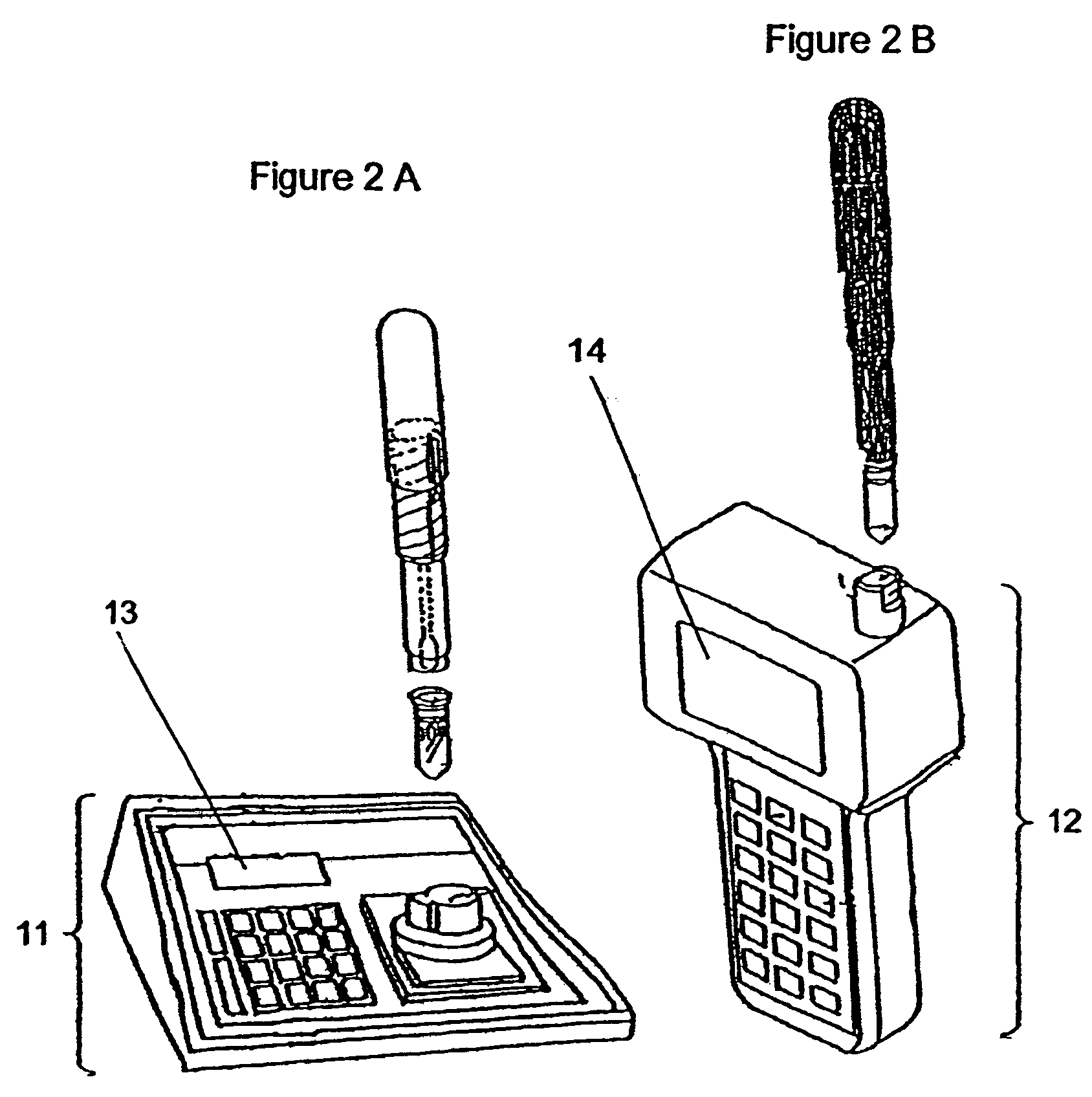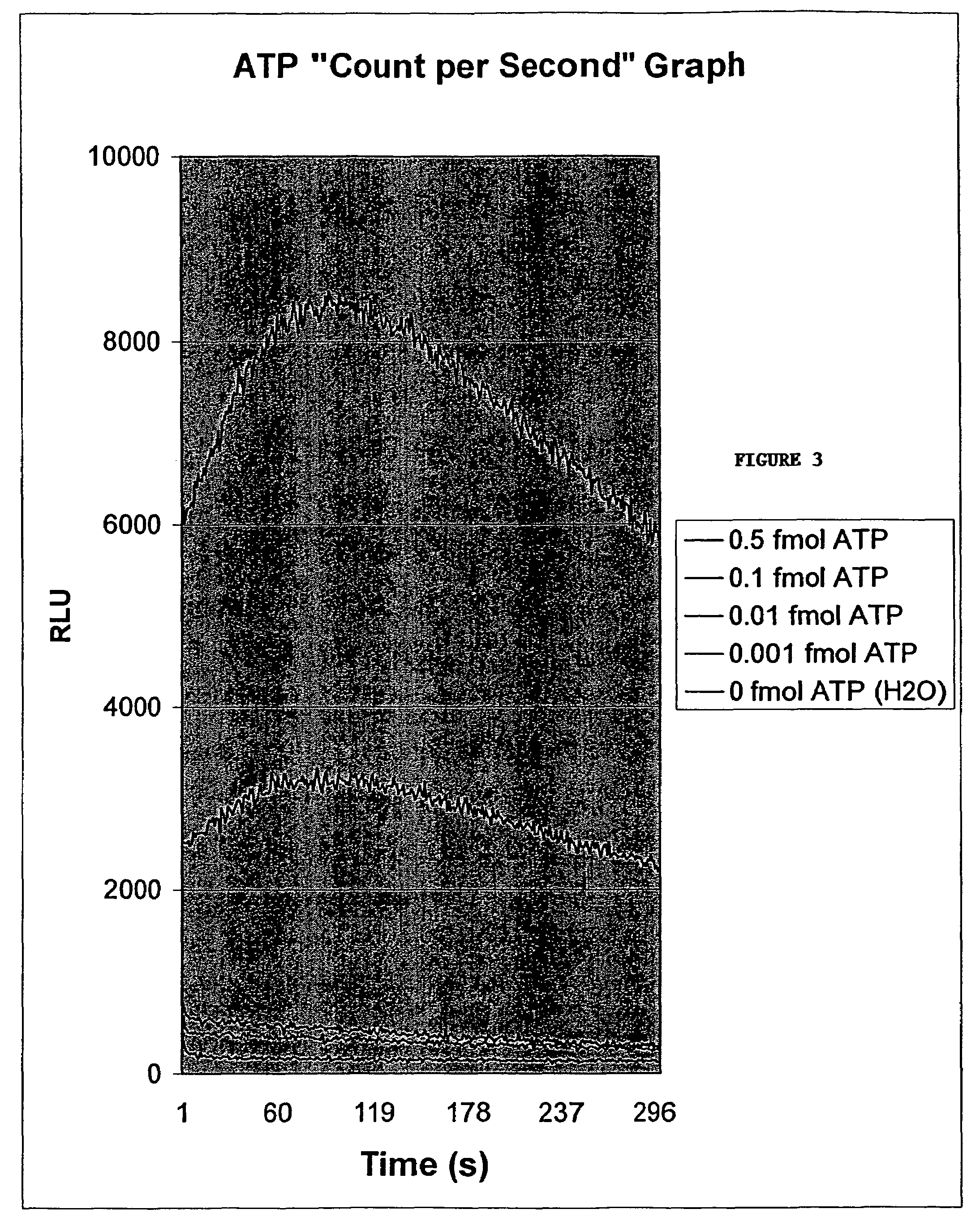Method of determining allergenic food on surfaces
a technology of adenosine triphosphate and surface detection, which is applied in the field of detection of adenosine triphosphate (atp), can solve the problems of microbial and allergen contamination, disease transmission, and reduced shelf life of products, so as to improve the sensitivity of hygiene monitoring methods, improve the sensitivity level, and facilitate use.
- Summary
- Abstract
- Description
- Claims
- Application Information
AI Technical Summary
Benefits of technology
Problems solved by technology
Method used
Image
Examples
example 1
[0086]BAR solution containing 99.995% modified Butterfield's Buffer (made with dibasic rather than monobasic phosphate) with 0.005% benzalkonium chloride was prepared as follows:[0087]A. Prepare 1 L of 0.195 M dibasic potassium phosphate as follows:[0088]1. Add 34 g dibasic potassium phosphate (K2HPO4; FW=174.2) to 500 mL ultra-pure water in a 1 liter Erlenmeyer flask. Mix until fully dissolved.[0089]2. Adjust pH to 7.20±0.02 with phosphoric acid.[0090]3. Bring volume to 1 L with ultra-pure water. Mix for 5 minutes.[0091]B. Prepare 22 L of BAR solution (0.24 mM dibasic potassium phosphate) as follows:[0092]1. Add 27.5 mL of 0.195 M dibasic potassium phosphate to carboy with mark at 22 L.[0093]2. Bring volume to 22 L with ultra-pure water. Mix for 5 minutes.[0094]3. Dispense 3500 mL of BAR solution into six x 4 L NALGENE (Nalgene is a registered trademark of Nalge Nunce International Corporation Rochester, N.Y.)[0095]C. Autoclave the bottles of BAR solution for 90 minutes at 121° C.[...
example 2
[0098]For testing, 300 μL of BAR solution was used (various compositions described below) and either luciferin-luciferase liquid solution, with magnesium co-factor or without magnesium cofactor. Tableted luciferin-luciferase (which contains additional stabilizers and magnesium cofactor) was also tested for comparison. In either case, the amount of luciferin per test was 23 μg, and the amount of luciferase was 2.3 μg. Luciferin / Luciferase tablet includes co-factor, stabilizers and bulking agents including: magnesium acetate, lactose, BSA, glycine, EDTA, DTT, lactose, AVICEL (AVICEL is a registered trademark of FMC Corporation, Philadelphia, Pa.) and magnesium stearate. Luciferin / Luciferase liquid includes only luciferin and luciferase or alternatively as indicated luciferin and luciferase and magnesium. LUM-T background was set to 100 (“off”) in order to see differences in uncorrected background values.
[0099]
TABLE 10.01 fmolNiblet SolutionLuciferin-NegativeATPPos / NegCompositionLucife...
example 3
[0100]An embodiment of the invention involves detection of bacterial contamination in water, for example food production water, rinse water or wet surfaces from cleaned equipment. In this embodiment a sample swab is dipped in sample water and swirled for approximately 5 seconds. After removal from the water sample, the swab is contacted with BAR solution, for example BAR solution containing 99.995% dibasic phosphate buffer and 0.005% benzalkonium chloride. The phosphate buffer has molarity in the range of about 0.1 millimolar to about 0.5 millimolar. After adding sample to the BAR solution the mixture is contacted with the luciferin / luciferase reagents for example the tablet described with reference to Example 1. Luminescence results are determined on a standard luminometer, for example a LUMINATOR-T or FIREFLY, utilizing a 20 second cumulative count and Power Curve generated result.
PUM
 Login to View More
Login to View More Abstract
Description
Claims
Application Information
 Login to View More
Login to View More - R&D
- Intellectual Property
- Life Sciences
- Materials
- Tech Scout
- Unparalleled Data Quality
- Higher Quality Content
- 60% Fewer Hallucinations
Browse by: Latest US Patents, China's latest patents, Technical Efficacy Thesaurus, Application Domain, Technology Topic, Popular Technical Reports.
© 2025 PatSnap. All rights reserved.Legal|Privacy policy|Modern Slavery Act Transparency Statement|Sitemap|About US| Contact US: help@patsnap.com



